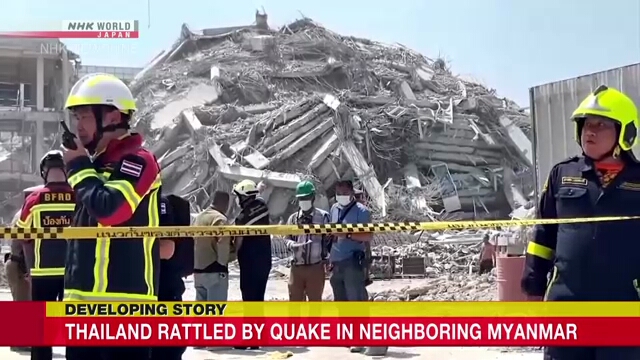Myanmar Earthquake: Regional Impact and Aftermath
A powerful earthquake struck Myanmar (formerly Burma) on [Insert Date of Earthquake if known, otherwise remove this sentence], sending shockwaves throughout the region and leaving a trail of destruction in its wake. The quake, measuring [Magnitude] on the Richter scale, had its epicenter near [Location of Epicenter], impacting not only Myanmar but also neighboring countries. This article delves into the immediate and long-term consequences of this devastating natural disaster, exploring its regional impact and the ongoing efforts in the aftermath.
Devastating Impact in Myanmar
The earthquake's impact on Myanmar has been catastrophic. Initial reports indicate [Number] casualties and a significant number of injuries. Many buildings, including homes, schools, and hospitals, have been completely destroyed or severely damaged, leaving thousands homeless and without access to essential services.
Key Challenges Faced by Myanmar:
- Infrastructure Damage: The earthquake caused widespread damage to roads, bridges, and communication networks, hindering rescue and relief efforts. Repairing this infrastructure will require significant time and resources.
- Loss of Life and Displacement: The sheer number of casualties and displaced individuals poses a massive humanitarian challenge. Providing shelter, food, water, and medical care to those affected is paramount.
- Economic Fallout: The destruction of infrastructure and businesses will undoubtedly have a significant negative impact on Myanmar's already fragile economy. Recovery will be a long and arduous process.
- Access to Aid: Reaching remote areas affected by the earthquake has proven difficult due to damaged infrastructure and challenging terrain. This has hampered the delivery of essential aid to those in desperate need.
Regional Tremors: Impact on Neighboring Countries
While the epicenter was in Myanmar, the earthquake's tremors were felt in neighboring countries including [List neighboring countries affected]. Although the damage in these countries was less severe than in Myanmar, the event served as a stark reminder of the region's vulnerability to seismic activity.
Neighboring Countries' Response:
- [Country Name]: [Describe their response, including aid sent, if any].
- [Country Name]: [Describe their response, including aid sent, if any].
- [Country Name]: [Describe their response, including aid sent, if any].
The Aftermath: International Aid and Recovery Efforts
The international community has responded to the crisis, with numerous organizations and governments pledging aid and assistance to Myanmar. [List major organizations involved in relief efforts, e.g., UN, Red Cross, etc.]. The focus is now shifting towards:
- Search and Rescue Operations: Locating and rescuing survivors trapped under rubble remains a critical priority.
- Emergency Relief: Providing immediate aid, including food, water, medical supplies, and shelter, to those affected.
- Long-Term Reconstruction: Planning and implementing long-term recovery programs that address infrastructure needs, economic recovery, and community rebuilding.
Seismic Activity in the Region: Understanding the Risk
Myanmar and its surrounding region are located in a seismically active zone, making them susceptible to earthquakes. Understanding this risk is crucial for developing effective disaster preparedness strategies and building resilient infrastructure. Further research into the region's geological makeup is necessary to better predict and mitigate future seismic events.
Conclusion: A Path Towards Recovery
The Myanmar earthquake serves as a tragic reminder of the devastating power of nature. While the immediate focus remains on rescue, relief, and recovery, the long-term challenge lies in building a more resilient future for the affected communities. International cooperation, effective disaster preparedness, and sustainable reconstruction efforts are vital to help Myanmar recover from this catastrophic event.
Keywords: Myanmar earthquake, Burma earthquake, earthquake aftermath, regional impact, seismic activity, humanitarian aid, disaster relief, earthquake recovery, infrastructure damage, natural disaster, international response, search and rescue.
Call to Action: Learn more about how you can support the relief efforts by visiting [Link to reputable charity or organization].
